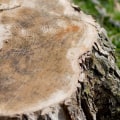Determining the best time to cut down trees involves understanding both the biological cycles of trees and the practical considerations that impact the ease and safety of tree removal. The optimal timing for this task can vary depending on the species of the tree, the reason for its removal, and local environmental conditions. Generally, late winter to early spring is often cited as the ideal period for cutting down trees. This timing, just before the spring growth starts, is advantageous for several reasons. During this period, trees are usually dormant, which means they have stopped their active growth. This dormancy reduces stress on the tree and can lead to a quicker recovery for trees that are pruned rather than removed entirely. Moreover, the lack of leaves allows for easier access and clearer visibility for the tree service professionals, facilitating a safer and more efficient removal process.
The dormant season also coincides with the ground being firmer in many regions, which can minimize the damage to surrounding landscaping from heavy equipment needed to remove the tree. Additionally, pests and diseases are less active during this time, reducing the risk of spreading infestations to healthy trees. It's important to consider that there are exceptions based on specific circumstances and types of trees. For instance, trees that are diseased, dead, or posing an immediate risk to property or personal safety may need to be removed as soon as these conditions are identified, regardless of the season.
Furthermore, some species may have particular time frames outside of the general recommendation when removal could be more beneficial or less impactful on the tree and its surrounding ecosystem. For example, oak trees are best cut down in the winter to avoid attracting beetles that spread oak wilt, a serious fungal disease.
Local regulations and weather conditions also play a significant role in determining the best time for tree removal. Some regions might have restrictions on tree removal during certain times of the year to protect wildlife habitats or due to fire risk during dry seasons. Extreme weather conditions, such as heavy rains or high winds, can make tree removal more hazardous and less effective, thus timing operations around these periods is crucial.
Professional tree service companies, like STP Tree Service, are invaluable resources in this process. They bring expertise in assessing the health and stability of trees, understanding local regulations and environmental considerations, and determining the safest and most effective timing for tree removal. Engaging professionals ensures that tree removal is conducted safely, efficiently, and with minimal impact on the surrounding landscape. They can also provide advice on whether a tree needs to be removed or if alternative measures, like pruning or disease treatment, could resolve the issue.



